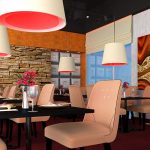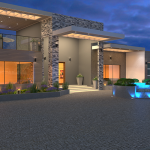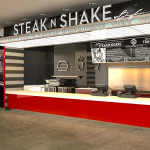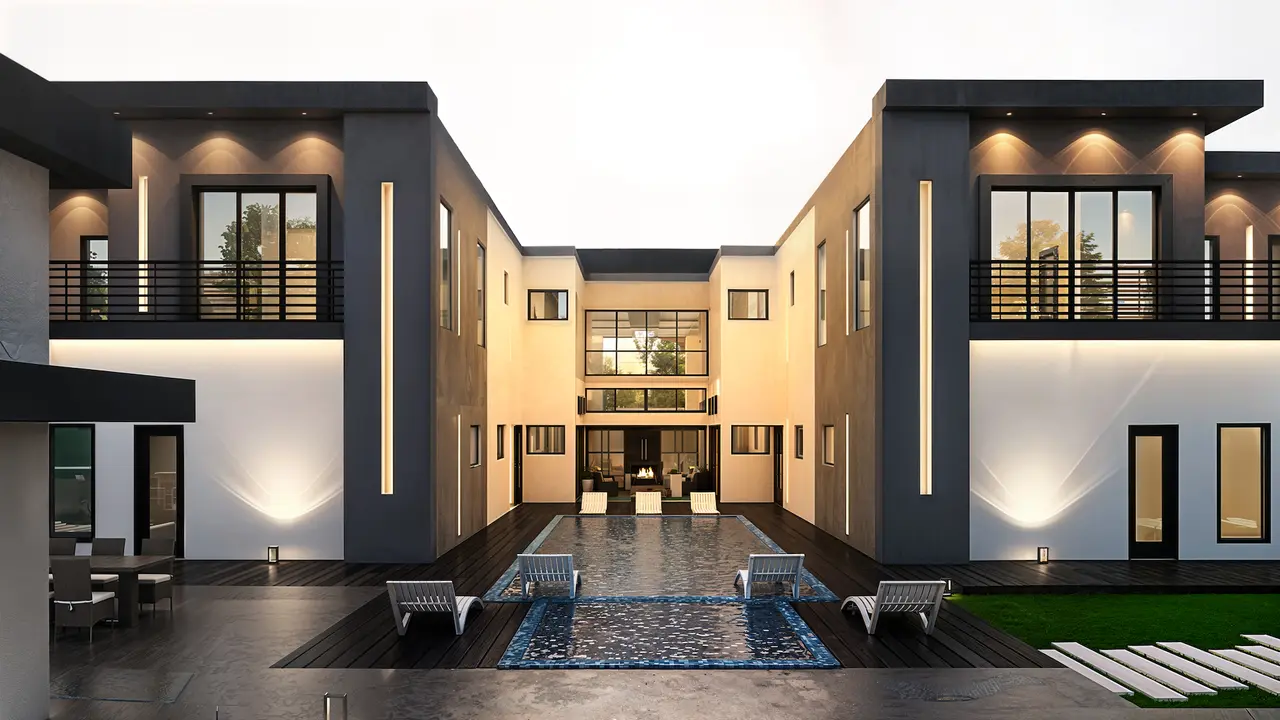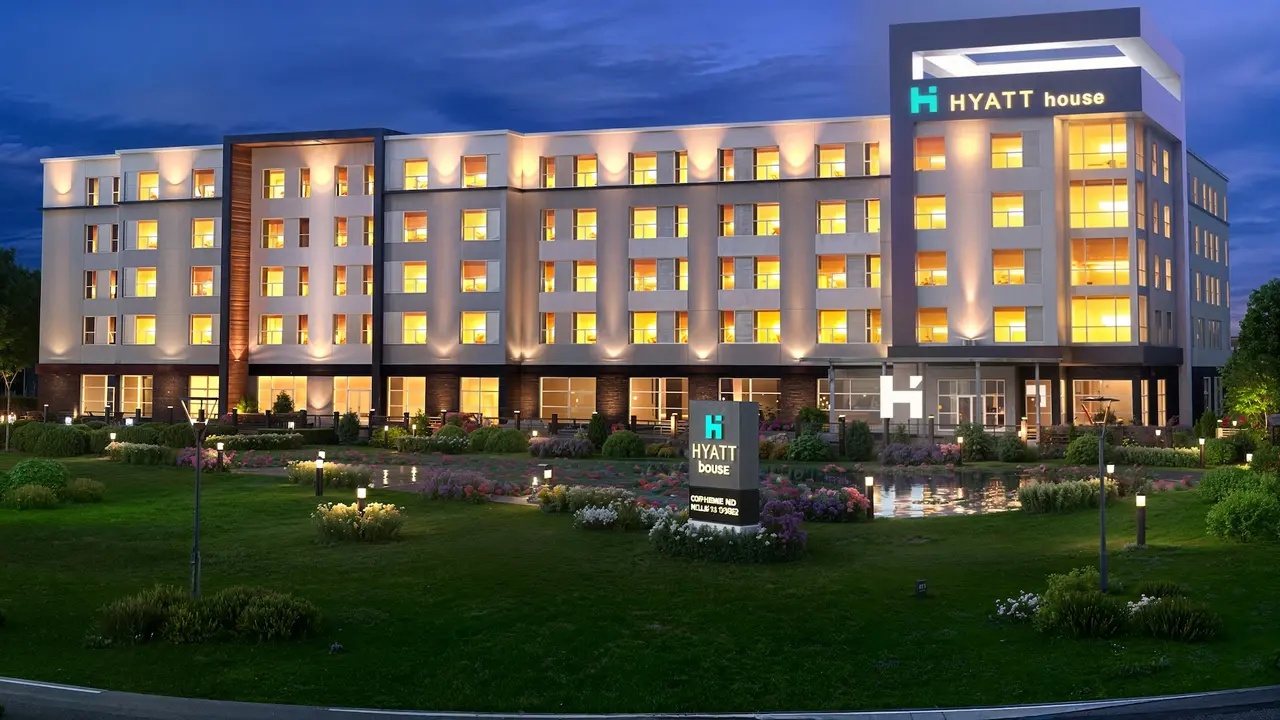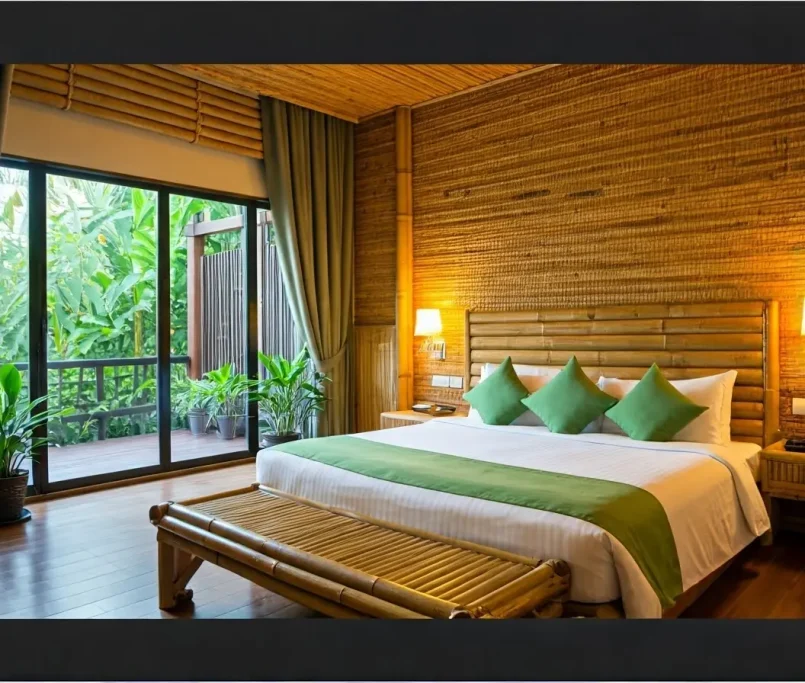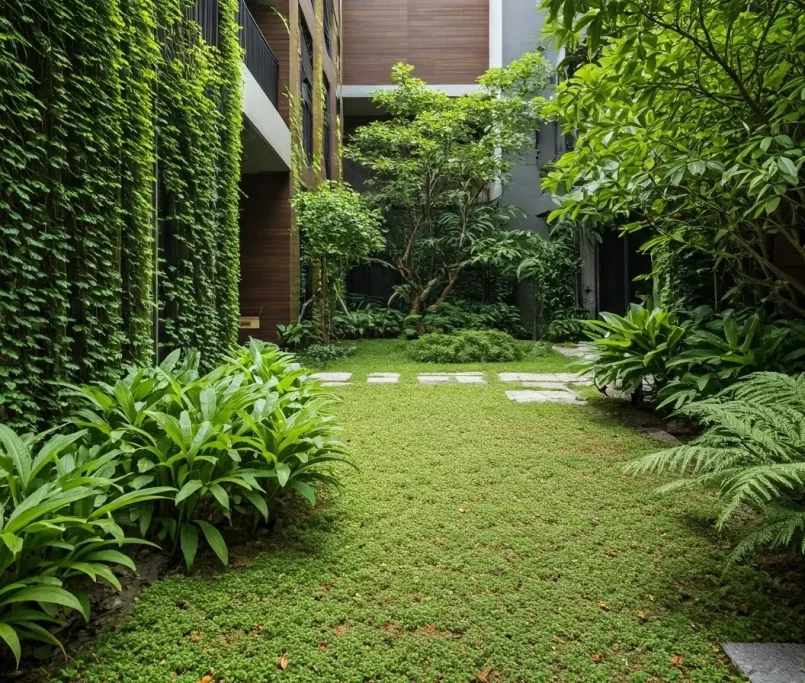How Can Hotel Architects Improve Guest Experience in Los Angeles?
Discover how hotel architects in Los Angeles are shaping the future of hospitality by blending innovation with luxury to enhance every guest’s experience. These visionary designers are not only focusing on aesthetic appeal but also on sustainable practices that minimize the environmental impact of their projects. From integrating advanced technologies that personalize the guest experience to creating spaces that foster community interaction, the work of these architects goes beyond traditional hotel design. They are reimagining layouts to include multifunctional areas, ensuring that every square foot serves a purpose while providing comfort and elegance. With an emphasis on local culture and context, these architects are also incorporating regional materials and themes, creating unique identities for each property that resonate with visitors and locals alike. As this trend continues, it is clear that the role of hotel architects will be pivotal in defining the hospitality landscape of tomorrow, setting new standards for design excellence and guest satisfaction.
Understanding Guest Needs and Preferences
To truly enhance guest experience, hotel architects start by diving deep into understanding the nuanced needs and preferences of their guests. Whether it’s creating serene spaces for relaxation or vibrant areas for social interaction, the key lies in anticipating and catering to diverse guest expectations. This thorough exploration often involves engaging directly with guests through surveys and interviews, gaining insight into what they value most in their stay. Architects also consider the local culture, ensuring that designs reflect the surrounding environment and provide an authentic experience. By incorporating elements such as natural lighting, sustainable materials, and technology that seamlessly integrates with guests’ lifestyles, hotels can foster a sense of comfort and belonging. Each thoughtfully designed space serves a purpose, whether it’s to inspire creativity in a co-working lounge or offer a peaceful retreat in a guestroom. Ultimately, the goal is to create a holistic environment where every corner feels purposeful, resulting in memorable experiences that encourage guests to return time and again.
Surveying recent trends, architects now more than ever, integrate flexible designs that allow rooms to serve dual purposes – seamlessly transitioning from a home office to a comfortable resting space, addressing the modern traveler’s multifaceted needs.
Incorporating Los Angeles Culture and Aesthetics
Engaging with Los Angeles’ lively culture and famous look is key for unique guest experiences. Architects blend the city’s history, art, and scenery into the hotel design, offering guests a true LA feel.
From the incorporation of Hollywood glam in the decor to the mimicking of the city’s diverse architecture, embedding Los Angeles’ unique character into the design not only captivates guests but also connects them more deeply to the locale. This thoughtful integration of local elements creates a sense of place that is both immediate and immersive, allowing visitors to feel the essence of Los Angeles in every corner. Bright colors inspired by the sunsets that paint the skies over the city evoke a mood of warmth and vibrancy, while materials that reflect the natural landscape, such as warm wood tones and stone, ground the space in the area’s stunning geography. Furthermore, incorporating artwork from local artists and showcasing cultural influences from different neighborhoods adds layers of storytelling, making each visit an exploration of the city’s rich heritage and contemporary creativity. These design choices not only enhance the aesthetic appeal but also foster an emotional connection, encouraging guests to engage with the city’s dynamic spirit and eclectic charm.
Enhancing Guest Comfort through Innovative Design
Innovative design is at the heart of enhancing guest comfort. From ergonomic furniture that provides both style and comfort to the use of natural lighting to brighten up spaces, every element is thoughtfully chosen to elevate the guest’s stay.
The thoughtful integration of green spaces within hotel designs, offering a tranquil escape from the bustling city, reflects how architects prioritize guest wellness and connection to nature. These natural elements not only enhance the aesthetic appeal of the property but also serve as vital components in promoting relaxation and rejuvenation. Lush gardens, rooftop terraces, and serene courtyards create inviting environments where guests can unwind, meditate, or socialize in a calm setting.
Moreover, studies have shown that exposure to nature can significantly reduce stress levels, improve mood, and foster a sense of peace. Incorporating local flora into these spaces further strengthens the bond between the guests and their surroundings, allowing for a more immersive experience that connects them to the region’s ecological landscape.
In addition to traditional greenery, many hotels are beginning to implement innovative designs featuring water features, such as tranquil ponds or cascading waterfalls, which introduce soothing sounds that enhance the overall ambiance. These thoughtful design choices transform hotel lobbies and common areas into peaceful retreats, making them more than just places to stay, but rather havens dedicated to well-being.
Ultimately, the fusion of architecture and nature in hotel design underscores a growing recognition of the importance of sustainability and mental health in hospitality. By nurturing this relationship between guests and the environment, hotels can create memorable experiences that linger long after guests have checked out.
In today’s fast-paced world, the integration of technology into our daily lives has become increasingly essential. From the moment we wake up to the moment we go to bed, technology plays a crucial role in facilitating our experiences. By utilizing various technological tools and platforms, we can create a seamless experience that enhances productivity, connectivity, and creativity.
One of the most significant advancements in this realm is the rise of smart devices. Smartphones, tablets, and smart home systems allow us to control and manage our environments right from the palm of our hands. These devices are not just tools; they are our personal assistants, helping us stay organized and on top of our schedules. With applications designed for task management, reminders, and even smart calendars, the process of planning and executing daily tasks has never been more efficient.
Moreover, the advent of cloud computing has revolutionized how we store and access information. Gone are the days of being tethered to a specific device or location to retrieve important files. Now, with just an internet connection, we can access our documents, photos, and projects from anywhere in the world. This flexibility not only boosts productivity but also enables seamless collaboration, as teams can work together in real-time, regardless of their physical locations.
Additionally, technology enhances the way we communicate. Messaging apps, video conferencing tools, and social media platforms have transformed interpersonal interactions. We no longer have to rely solely on phone calls or emails; we can share ideas and engage in discussions instantaneously, fostering a more connected society. These platforms also allow us to stay informed and engaged with the latest developments in our fields and communities, empowering us to make informed decisions.
In the realm of entertainment and leisure, technology has made significant strides as well. Streaming services, gaming platforms, and virtual reality experiences provide endless options for relaxation and entertainment. This not only enriches our leisure time but also opens new avenues for creativity and social interaction. For instance, online gaming communities allow people from diverse backgrounds to connect and collaborate, breaking down geographical barriers.
However, embracing technology comes with challenges. Issues such as digital addiction, privacy concerns, and the digital divide must be addressed to ensure that the benefits of technological advancements are enjoyed by everyone. It is imperative for individuals and organizations to strike a balance between leveraging technology for convenience and maintaining a healthy relationship with it.
In conclusion, utilizing technology for a seamless experience offers incredible opportunities for growth, efficiency, and connection. By embracing the tools at our disposal, we can navigate the complexities of modern life with greater
In today’s digital era, hotel architects harness cutting-edge technology to create a seamless and personalized experience for guests. With features like mobile check-ins and smart rooms that adapt to individual preferences, technology plays a crucial role in anticipating and fulfilling guests’ needs with remarkable efficiency.
Moreover, incorporating sustainable technologies not only supports the environment but also resonates with eco-conscious guests, strengthening their overall experience.
Sustainability: Designing with the Environment in Mind
In recent years, the concept of sustainability has gained significant traction across various industries, emphasizing the need to create products and systems that not only meet human needs but also do so without compromising the health of our planet. It’s become increasingly clear that traditional design approaches often overlook the environmental impact of materials and processes. As a result, designers and architects are now tasked with the challenge of integrating sustainable practices into their work.
One of the key principles of sustainable design is the use of renewable resources. This involves selecting materials that can be replenished naturally, such as bamboo, cork, and recycled metals. By prioritizing these materials, designers can help reduce the depletion of nonrenewable resources, thereby minimizing their ecological footprint. Additionally, the lifecycle of a product must be considered; from sourcing and production to usage and eventual disposal, each phase holds potential environmental consequences.
Another critical aspect is energy efficiency. Incorporating energy-efficient technologies and strategies—
, and implementing passive solar design—plays a vital role in reducing energy consumption. These methods not only lower environmental impact but can also lead to significant cost savings for consumers.
Robert Ancill of TNI Group comments, ‘Water conservation is equally important in sustainable design. Efficient water management systems, such as rainwater harvesting and greywater recycling, help to minimize waste and ensure that this precious resource is used wisely. Furthermore, landscaping with native vegetation reduces the need for irrigation, contributing to a more sustainable ecosystem’.
Collaboration is essential in the journey toward sustainability. Designers, engineers, and manufacturers must work together to innovate and share knowledge. By fostering a culture of sustainability within organizations and building partnerships with stakeholders, the design community can lead by example and drive widespread change.
Moreover, educating consumers about the importance of sustainability in design can help shift public perception and behavior. When individuals understand how their purchasing decisions impact the environment, they may be more inclined to choose products that are sustainably sourced and produced.
In conclusion, sustainable design is not merely a trend but a necessary evolution in how we approach creation. By thoughtfully considering the environmental impact of our choices and actively seeking ways to incorporate sustainability into our designs, we can help secure a healthier planet for future generations. As we move forward, it is crucial to embrace innovation, prioritize sustainability, and design with the environment in mind, ensuring that beautiful, functional products and spaces do not come at the expense of our natural world.
Sustainability is a cornerstone of modern hotel architecture. Hotel architects in Los Angeles are increasingly incorporating eco-friendly materials and energy-efficient systems to minimize environmental impact and cater to the growing number of environmentally conscious travelers.
Recognizing the diverse activities guests engage in, architects design versatile spaces that can be easily adapted for work, leisure, or socializing. This approach not only maximizes the utility of spaces but also enhances guests’ ability to enjoy their stay according to their personal preferences.
Lobbies that double as co-working spaces, rooftop terraces for yoga sessions, and private nooks for relaxation are just a few examples of how versatile spaces are integrated into hotel designs.
Prioritizing Safety and Accessibility in Design
In today’s rapidly evolving world, prioritizing safety and accessibility in design isn’t just a nice-to-have; it’s essential. Designers are increasingly called upon to create environments and products that cater to the diverse needs of all users, including those with disabilities. This commitment to inclusivity is not only a moral imperative but also a legal one, as many regions implement strict accessibility regulations to ensure that public spaces and online platforms are navigable by everyone.
When considering safety, it is crucial to incorporate features that minimize risks and promote well-being. For instance, ensuring that pathways are clear of obstacles can significantly reduce the likelihood of accidents. Alongside that, using materials that are non-toxic and durable can create safer environments. Furthermore, incorporating adequate lighting and signage can improve the overall safety and user experience, making spaces easier to navigate, especially in emergency situations.
Simultaneously, we must recognize that accessibility goes beyond just physical considerations. Digital design, for example, should prioritize easy navigation for users with visual impairments by employing screen reader technology and ensuring high contrast in color schemes. Captioning videos and providing alternative text for images enhances content accessibility, enabling broader engagement and understanding across diverse audiences.
Designing with both safety and accessibility in mind can lead to innovative solutions that benefit everyone. By conducting thorough user research and usability testing, designers can identify pain points and adapt their designs accordingly. Collaborative efforts with individuals who have firsthand experience with disabilities also foster a deeper understanding of the challenges they face, ultimately informing more effective design choices.
In conclusion, the commitment to prioritizing safety and accessibility in design is fundamental for creating inclusive, functional, and pleasant experiences for all users. As we move forward, it is vital that designers continue to advocate for and implement solutions that address these critical aspects, ensuring that everyone can thrive in the spaces and products we create.
Safety and accessibility are paramount in hotel design. Architects ensure that buildings are not only compliant with safety regulations but also accessible to all guests, including those with disabilities. The incorporation of features like barrier-free design and emergency response technologies showcases the commitment to guest safety and inclusivity.
In recent years, the concept of hospitality has evolved beyond traditional notions of service and accommodation. Architects are now at the forefront of this transformation, redefining the physical spaces where hospitality occurs to foster unique experiences and emotional connections.
The architect’s vision extends beyond the aesthetic elements of design; it encompasses functionality, sustainability, and an understanding of the human experience. This holistic approach allows for the creation of environments that invite guests to engage and interact, rather than simply pass through. For instance, open-plan layouts, communal spaces, and biophilic design principles serve to blur the lines between indoor and outdoor settings, creating a sense of harmony with nature.
In addition, technology plays a pivotal role in reshaping the landscape of hospitality. With the integration of smart-building solutions, guests enjoy seamless and personalized experiences from the moment they arrive. Features such as mobile check-in, digital room keys, and automated climate controls not only enhance convenience but also contribute to energy efficiency.
Furthermore, the evolution of hospitality architecture places a strong emphasis on cultural authenticity. By incorporating local materials, traditions, and artistry into their designs, architects create spaces that resonate with the essence of their environments. This connection to place enriches the guest experience, encouraging deeper engagement with the surrounding community and fostering a sense of belonging.
Moreover, the emphasis on wellness is shaping how spaces are designed, incorporating elements like natural light, soundscapes, and air quality to promote mental and physical health. The result is a more thoughtful approach to hospitality that prioritizes both the guests’ well-being and the sustainability of the environments they inhabit.
As architects continue to push the boundaries of design in the realm of hospitality, the potential for innovation remains limitless. The marriage of artistry, technology, and authenticity presents a new frontier in creating spaces that not only accommodate but also inspire and rejuvenate. Embracing this vision will undoubtedly lead to enhanced guest experiences and redefine what it means to offer true hospitality in the modern age.
The role of a hotel architect in Los Angeles transcends the traditional boundaries of design, delving deep into the art of creating memorable experiences. As we’ve seen, it’s about more than just aesthetics; it’s about constructing environments that speak to the heart of traveller’s desires. By prioritizing guest needs, incorporating local culture, leveraging technology, focusing on sustainability, and ensuring comfort and safety, architects are redefining what it means to stay in Los Angeles.

